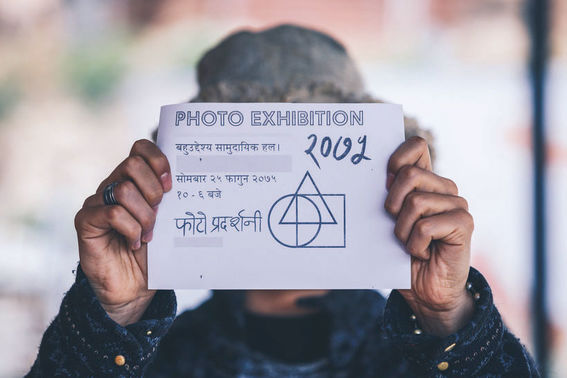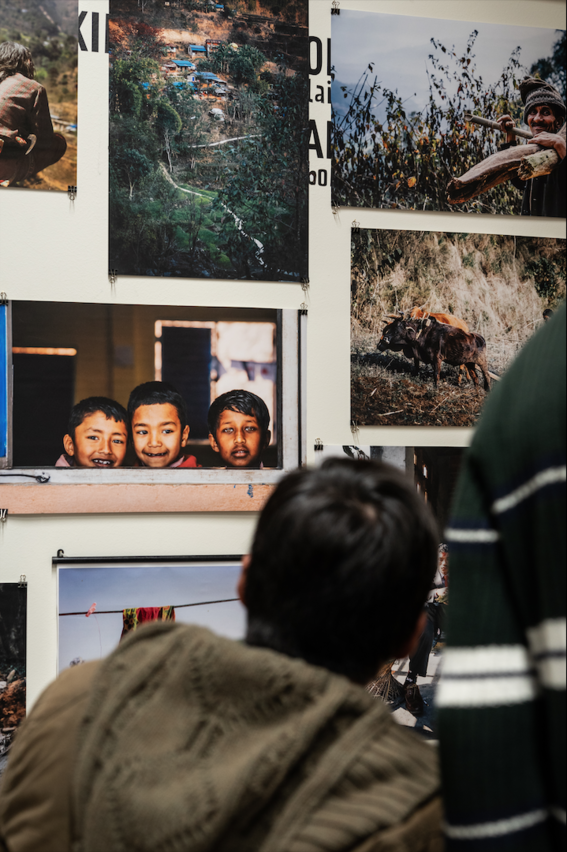Lifelong experiences from Sustainable Global Technologies course: Researching sustainable reconstruction after a natural disaster in Nepal

Sustainable Global Technologies Programme is an interdisciplinary study programme of the School of Engineering at Aalto University. It offers real-life development projects on the connections of sustainability, technology, cultural and societal challenges, in Africa, Asia and Latin America.
In this article, we look back to one of the projects in 2019. We interviewed Creative Sustainability design student Luis Alfonso Monje about his team’s Nepali Project – Disaster Resilience in Nepal. The project was about sustainable reconstruction after the natural disaster in 2015 when Nepal suffered from the Gurkha earthquake which took nearly 9,000 Nepalese.
The project team was strongly multidisciplinary: it consisted of seven students from Aalto, five students from the AITM, Asian Institute of Technology and Management, and mentors from Aalto and AITM. Moreover, Aalto Global Impact was supporting the project through a project coordinator. The expectations were set high in the beginning, and it became obvious that the project was very important for the whole team. Adaptation, flexibility and open-mindedness were important qualities for working in the team.
Building a deeper understanding of social cohesion
The team travelled for a two-week visit in the rural area of Dhungentar, settlement located 68 km northwest of Kathmandu. In Dhungentar, the team began to familiarise itself with the community and what had happened before, during and after the Gurkha earthquake. During the field research, they realised that sudden events, disasters, bring people together. This was something they had assumed already before the trip. However, when the emergency is over, people tend to “go back to normal”. The team began to build a deeper understanding in social cohesion outside natural disasters. They studied the topic through group and peer-to-peer semi-structured interviews. Reflection along the way and, interestingly, also photography, were methods to gain a better understanding about the community and social cohesion in Dhungentar.
According to the team, social cohesion aims at healing the community and it is “a different version of the community”. It is about bridging gaps between people – was it a family, neighbours or a larger group of people. The team defined the concept as “the process of inclusive interaction that promotes sense of belonging and opportunities for well-being, while allowing for development both on individual and community level”. It is about putting people, immaterial values first.
Luis Alfonso MonjeWe don’t need the earthquake for getting together.

During the field trip, photography began to act as a tool for gaining understanding of the community. The team organised a photography exhibition in The Multipurpose Community Hall in Dhungentar. The exhibition was open for the whole community. The photos revealed that social cohesion can be found in many different ways: in interactions, different places, objects, symbols, and so on. The exhibition acted as an opportunity to come together in one place at a certain time. When it took place, there was not only a photography exhibition but also a local market selling jewellery, honey, incense and other goods. The team had also planned after-school activities for kids and there were dance and singing performances in the happening.
After the field trip, the team drew two future scenarios for reinforcing social cohesion in Dhungentar. The first scenario, named as “The Network”, approaches social cohesion through supporting knowledge-sharing activities and collaboration between different actors of the community (such as the community hall and school in Dhungentar). The other scenario, “Committees”, focuses on improved coordination and inclusion on the administrative level of the village.

Eventually, the project grew even longer – thanks to the team’s drive. They held the same photography exhibition in Finland as in Nepal. The exhibition was called “Nepali - An exhibition” and it was curated by María Paloma Velázquez. On the day of the exhibition opening, the team also launched a book called Bound: Photography born in Nepal. The book aims at demystifying social cohesion. For the book, approximately 100 people were asked “what social cohesion is” and it provides around 30 definitions from people around the world. The book includes photos exhibited in Nepal and Finland alongside the definitions. A week after the Nepali team had launched the book in Finland, they also held a presentation about it in Prague, at the PhaseBook: Art Book & Zine Fair.
The book Bound: Photography born in Nepal is now available at Aalto University Shop, Helsinki Design Museum Shop and Nide Bookstore.
The team held a blog and wrote a report about their journey. Writings, photography and the report can be found at www.nepali.fi.










